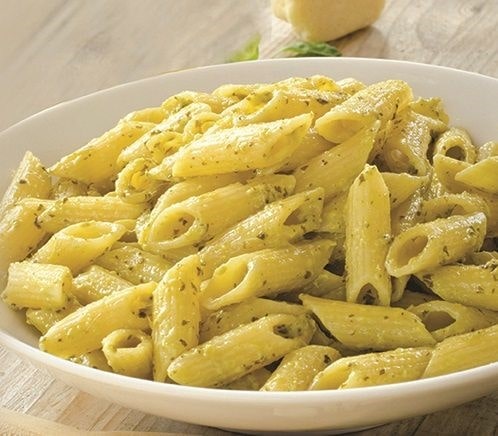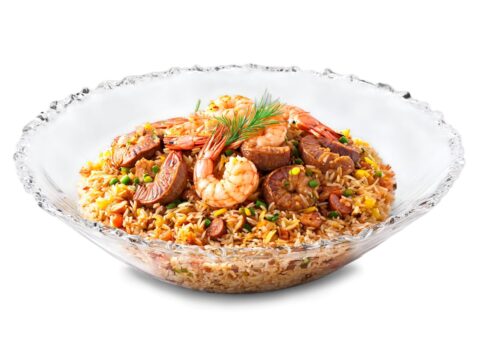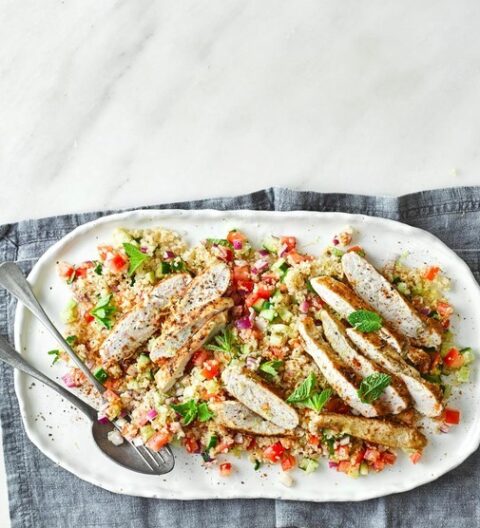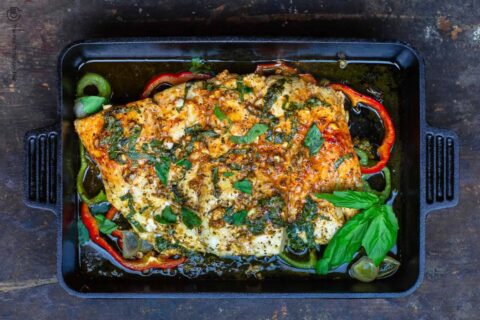
Two staples of the Mediterranean diet, extra virgin olive oil and pasta make a delicious heart healthy combination
Updated July 18th 2023
Mediterranean Diet Recipes
The Mediterranean diet has gained a lot of popularity lately, and for good reason. This diet focuses on wholesome, unprocessed foods such as fruits, vegetables, nuts, whole grains, and lean proteins. What sets this diet apart is the emphasis on healthy fats such as extra virgin olive oil, which is rich in monounsaturated fatty acids that are beneficial for heart health. Additionally, the Mediterranean diet is not only great for heart health but can also aid in weight loss due to its focus on nutrient-dense foods. With the abundance of delicious Mediterranean diet recipes available, it’s no wonder that this way of eating has become so popular among health-conscious individuals.
Extra Virgin Olive Oil & Penne Pasta
Extra virgin olive oil and pasta is a great combination for a heart healthy Mediterranean diet. Extra virgin olive oil is made from pure, cold-pressed olives. It is the highest quality olive oil available and has the most health benefits. Extra virgin olive oil contains polyphenols, which are antioxidants that can help protect your heart and lower your risk of heart disease. The best olive oil for a heart healthy diet is extra virgin olive oil because it contains the most polyphenols.
Extra virgin olive oil is also a good source of monounsaturated fat, which can help lower your cholesterol levels and improve your heart health. Pasta is a good source of complex carbohydrates, which provide energy and help to regulate blood sugar levels. Pasta is also low in saturated fat and cholesterol, making it a good choice for a heart healthy diet. Together, extra virgin olive oil and pasta make a great combination for a heart healthy diet.
What Is Pasta?
Penne Pasta is a type of noodle that’s traditionally made from durum wheat, water or eggs. It is formed into different noodle shapes and then cooked in boiling water. Nowadays, most products sold as pasta are made from common wheat. However, similar noodles can be made from other grains, such as rice, barley or buckwheat.
Some types of pasta are refined during processing, stripping the wheat kernel of the bran and germ, removing many of the nutrients. Sometimes refined pasta is enriched, meaning it has some nutrients, such as B vitamins and iron, added back in. Whole-grain pasta is also available, which contains all parts of the wheat kernel.
A few examples of commonly consumed types of pasta include: Spaghetti, Tortellini, Ravioli, Penne, Fettuccine, Orzo, Macaroni.
Ingredients
- 16 ounces of penne pasta
- 2 cloves of grated garlic, chopped
- 1 cup of extra virgin olive oil
- 1 teaspoon of dried oregano
- ¼ cup of grated romano or parmesan cheese
- 1 ounce of pine nuts sautéed in extra virgin olive oil
- 1 teaspoon of salt to boil the pasta
- 1 tablespoon of extra virgin olive oil to boil the pasta
- Salt and pepper to taste
Instructions
- Put 2 quarts of water to boil with the teaspoon of salt and oil, then add the pasta.
- Cook for 10 minutes or until ready. (Don’t overcook. Pasta should be tender, but still have “tooth.”)
- Drain pasta and add the grated garlic, oregano, cheese, pine nuts and salt/pepper to taste.
- Prior to serving, add a cup of extra virgin olive oil.
Is Pasta Healthy or Unhealthy?
Pasta and penne pasta is one of the best parts of the Mediterranean diet. But pasta is one of those foods that can be part of a healthy diet or can become a not-so-healthy problem. Pasta is high in carbs, which can be bad for you when consumed in large amounts. People in the United States and Canada typically eat pasta in large portion sizes and with high-calorie sauces, which can contribute to weight gain. It also contains gluten, a type of protein that causes issues for those who are gluten sensitive. On the other hand, pasta can provide some nutrients that are important to health.
Refined Pasta
Most people prefer refined pasta, meaning that the wheat kernel has been stripped of the germ and bran along with many of the nutrients it contains. Refined pasta is higher in calories and lower in fibre. This may result in decreased feelings of fullness after you eat it, compared to eating high-fibre, whole-grain pasta.
Whole-Grain Vs. Refined Pasta
Whole-grain pasta is typically high in fibre, manganese, selenium, copper and phosphorus, while refined, enriched pasta tends to be higher in iron and B vitamins. Whole-grain pasta is also lower in calories and higher in fibre and certain micronutrients than refined pasta.
Fibre moves through the gastrointestinal tract undigested and helps promote fullness. For this reason, whole-grain pasta may be more effective than refined pasta in reducing appetite and cravings.
Pasta Is High in Carbs
Pasta is high in carbs, with a one-cup serving of cooked spaghetti containing between 37–43 grams, depending on whether it is refined or whole-grain. Carbs are broken down quickly into glucose in the bloodstream, which results in a sharp rise in blood sugar. Refined pasta in particular is higher in carbs and lower in fibre than whole-grain pasta.
Additionally, simple carbs like refined pasta are digested very quickly, leading to increased hunger and a higher risk of overeating. For this reason, those who have diabetes are advised to keep carb intake in moderation and eat plenty of fibre. Making these changes slows the absorption of sugar in the bloodstream and helps maintain steady blood sugar levels.
How to Make Pasta Healthier
When eaten in moderation, pasta can be part of a healthy diet. Whole-grain pasta may be a better choice for many, as it is lower in calories and carbs but higher in fibre and nutrients. However, in addition to the type of pasta you pick, what you top it with is just as important.
Calories can stack up fast when adding high-fat, high-calorie toppings like cream-based sauces and cheeses. If you are watching your weight, go for a drizzle of heart-healthy extra virgin olive oil, some fresh herbs or a few of your favourite veggies instead.
You can also add your choice of protein to your pasta to turn it into a balanced meal. For instance, fish and chicken can add some extra protein to keep you feeling full and satisfied, while broccoli, bell peppers or tomatoes can provide nutrients and additional fibre.
Here are some tips for enjoying pasta as part of a healthy diet:
Watch your portion sizes closely. Pasta is most commonly as a side dish in the Mediterranean. Keep your portion sizes at between 1/2 cup and 1 cup to avoid eating too many calories and to keep your blood sugar stable. This strategy helps you stay trim and keeps your heart healthy.
Avoid eating heavy entrees with heavy side dishes. If you’re eating pasta with a heavier, higher-fat and -calorie sauce (such as a béchamel sauce), make sure the rest of your meal is on the light side, like a simple salad.
Add a little protein. If you’re eating an entree that includes pasta, make sure you have some protein as well. This addition may mean including seafood or meat in your pasta or having nuts and beans in a side salad. Adding protein provides a more balanced meal and helps maintain stable blood sugar.
Don’t fill up on just penne pasta. You don’t want to eat a large amount of pasta at once. Instead, load up your small portion of pasta with proteins and lots of fresh vegetables so that you still feel like you have a hearty entree
Penne Pasts With Pine Nuts & Extra Virgin Olive Oil
Here is an easy penne pasta recipe for the lazy days of summer. The pine nuts give a bit of crunch and the Romano (or parmesan) cheese adds a nice saltiness to the pasta.



